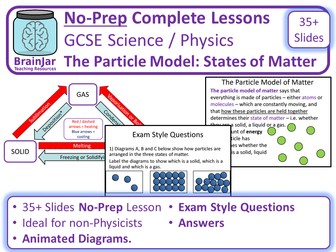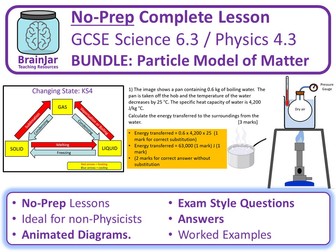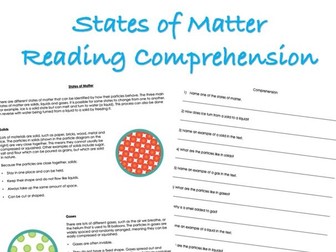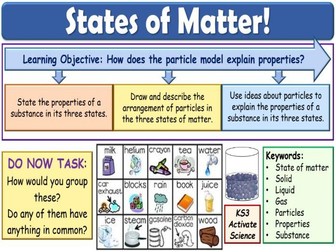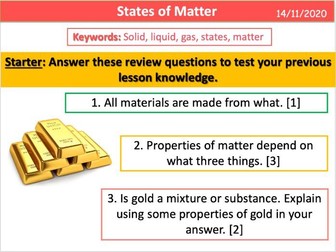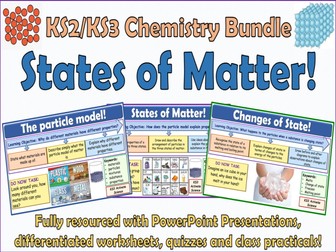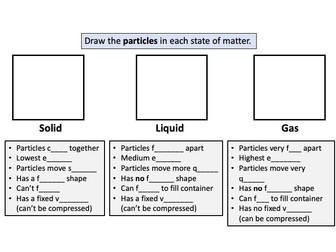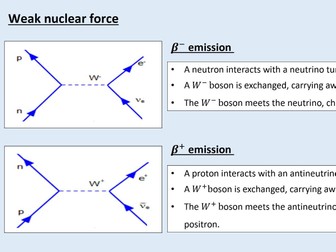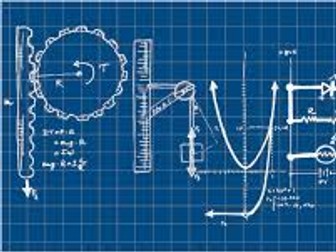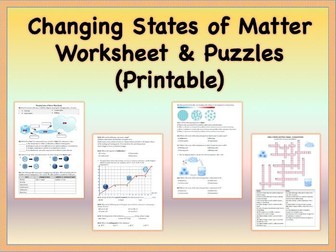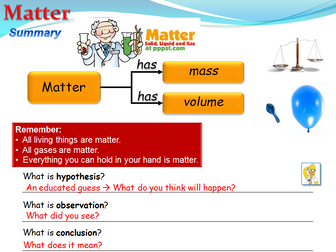Particle Model: States of Matter
Complete No-Prep lesson with exam questions, tasks and answers on States of Matter, Particle Model (Kinetic Theory), and Changes of State for AQA GCSE (9-1) Science / Physics. This was updated 31st Jan 2022 as I realised that I had not included answers to a couple of questions, and then I made some mainly cosmetic changes 3rd April 2022 - please download again if you are one of the many people who purchased before then.
As a Secondary Science teacher and Deputy Headteacher for many years I make high quality no-prep lessons so busy teachers can teach outstanding lessons without spending hours planning. This high quality lesson includes explanations, different types of in-lesson assessment (all with answers) and unique exam questions.
My lessons are ideal for non-Physicists - as a Biologist who retrained as a Physics teacher I know how to take learners on a journey that builds up their understanding step by step, while still going into a lot of depth. The preview video shows a representative sample of slides from the resource so that you get a good idea of what it includes before you buy.
What’s Included:
• Two Starter / Do Now activities so you can extend this over two lessons if needs be.
• Explanation slides in “chunked” sections with animated diagrams.
• Multiple questions in different question styles and difficulties - no need for worksheets. Each “chunked” explanation section typically includes a set of “learning check / quick questions” followed by a set of in-depth questions on the learning from that “chunk” of the lesson. All questions have answers.
• Exam-style questions on the whole lesson at the end of the lesson- these are unique, based on real exam questions but not just copied from exam boards.
• Answers for all questions
• All easily editable to adapt to your teaching or to use in existing lessons.
• Slightly humorous, at points, if you like that sort of thing.
Learning objectives:
Describe the states of matter – the properties of solids, liquids and gases.
Describe the changes of state between the different states of matter.
Describe kinetic theory - how the particles are arranged and move in solids, liquids and gases.
Link the forces between particles to the arrangement and movement of the particles and to the properties of solids, liquids and gases.
Explain why mass is conserved when a change of state occurs.
Written for AQA GCSE Science and Physics but likely to be applicable to other exam specifications and certainly adaptable for a more able KS3 class.
Please leave a rating / review and all other feedback gratefully received!
